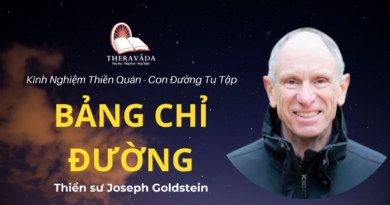Going For Refuge & Taking The Precepts – Xii. The Benefits Of Sila – Bhikkhu Bodhi
XII. THE BENEFITS OF SILA
The benefits sila brings to the one who undertakes it can be divided into three classes: (1) the benefits pertaining to the present life; (2) the benefits pertaining to future lives; and (3) the benefit of the ultimate good. These we will discuss in turn.
1. Benefits pertaining to the present life.
At the most elementary level, the observance of the five precepts protects one from coming into trouble with the law, ensuring immunity from temporal punishment at least with regard to those actions covered by the precepts. Killing, stealing, adultery, bearing false testimony, and irresponsible behavior caused by drunkenness being offenses punishable by law, one who undertakes the five precepts avoids the penalties consequent upon these actions by abstaining from the actions which entail them.
Further temporal benefits accrue through the observance of the precepts. Following the precepts helps to establish a good reputation among the wise and virtuous. At a more inward level it leads to a clear conscience. Repeated violations of the basic principles of ethics, even if they escape detection, still tend to create a disturbed conscience — the pain of guilt, uneasiness, and remorse. But maintaining the precepts results in freedom from remorse, an ease of conscience that can evolve into the “bliss of blamelessness” (anavajjasukha) when we review our actions and realize them to be wholesome and good. This clarity of conscience fosters another benefit — the ability to die peacefully, without fear or confusion. At the time of death the various actions we have regularly performed in the course of life rise to the surface of the mind, casting up their images like pictures upon a screen. If unwholesome actions were prevalent their weight will predominate and cause fear at the approach of death, leading to a confused and painful end. But if wholesome actions were prevalent in the course of life the opposite will take place: when death comes we will be able to die calmly and peacefully.
2. Benefits pertaining to future lives.
According to the Buddha’s teaching the mode of rebirth we take in our next existence is determined by our kamma, the willed actions we have performed in this present existence. The general principle governing the working of the rebirth process is that unwholesome kamma leads to an unfavorable rebirth, wholesome kamma to a favorable rebirth. More specifically, if the kamma built up by breaking the five precepts becomes the determining cause of the mode of rebirth it will conduce to rebirth in one of the four planes of misery — the hells, the realm of tormented spirits, the animal world, or the world of the asuras. If, as a result of some wholesome kamma, a person who regularly breaks the five precepts should take rebirth as a human being, then when his unwholesome kamma matures it will produce pain and suffering in his human state. The forms this suffering takes correspond to the transgressions. Killing leads to a premature death, stealing to loss of wealth, sexual misconduct to enmity, false speech to being deceived and slandered by others, and the use of intoxicants to loss of intelligence.
The observance of the five precepts, on the other hand, brings about the accumulation of wholesome kamma tending to rebirth in the planes of happiness, i.e., in the human or heavenly worlds. This kamma again, coming to maturity in the course of the life, produces favorable results consonant in nature with the precepts. Thus abstaining from the taking of life leads to longevity, abstaining from stealing to prosperity, abstaining from sexual misconduct to popularity, abstaining from false speech to a good reputation, and abstaining from intoxicants to mindfulness and wisdom.
3. The benefits of the ultimate good.
The ultimate good is the attainment of nibbana, deliverance from the round of rebirths, which can be achieved either in the present life or in some future life depending on the maturity of our spiritual faculties. Nibbana is attained by practicing the path leading to deliverance, the noble eightfold path in its three stages of moral discipline, concentration, and wisdom. The most fundamental of these three stages is moral discipline or sila, which begins with the observance of the five precepts. The undertaking of the five precepts can thus be understood to be the first actual step taken along the path to deliverance and the indispensable foundation for the higher attainments in concentration and wisdom.
Sila functions as the foundation for the path in two ways. First the observance of sila promotes a clear conscience, essential to the development of concentration. If we often act contrary to the precepts our actions tend to give rise to remorse, which will swell up to the surface of the mind when we sit in meditation, creating restlessness and feelings of guilt. But if we act in harmony with the precepts our minds will be imbued with a bliss and clarity of conscience which allows concentration to develop easily. The observance of the precepts conduces to concentration in a second way: it rescues us from the danger of being caught in a crossfire of incompatible motives disruptive of the meditative frame of mind. The practice of meditation aimed at serenity and insight requires the stilling of the defilements. But when we deliberately act in violation of the precepts our actions spring from the unwholesome roots of greed, hatred and delusion. Thus in committing such actions we are arousing the defilements while at the same time, when sitting in meditation, we are striving to overcome them. The result is inner conflict, disharmony, a split right through the center of our being obstructing the unification of the mind needed for meditative attainment.
At the outset we cannot expect to eliminate the subtle forms of the defilements all at once. These can only be tackled later, in the deeper stages of meditation. In the beginning we have to start by stopping the defilements in their coarser modes of occurrence, and this is achieved by restraining them from reaching expression through the channels of body and speech. Such restraint is the essence of sila. We therefore take up the precepts as a form of spiritual training, as a way of locking in the defilements and preventing them from outward eruptions. After they have been shut in and their effusions stopped we can then work on eliminating their roots through the development of concentration and wisdom.









